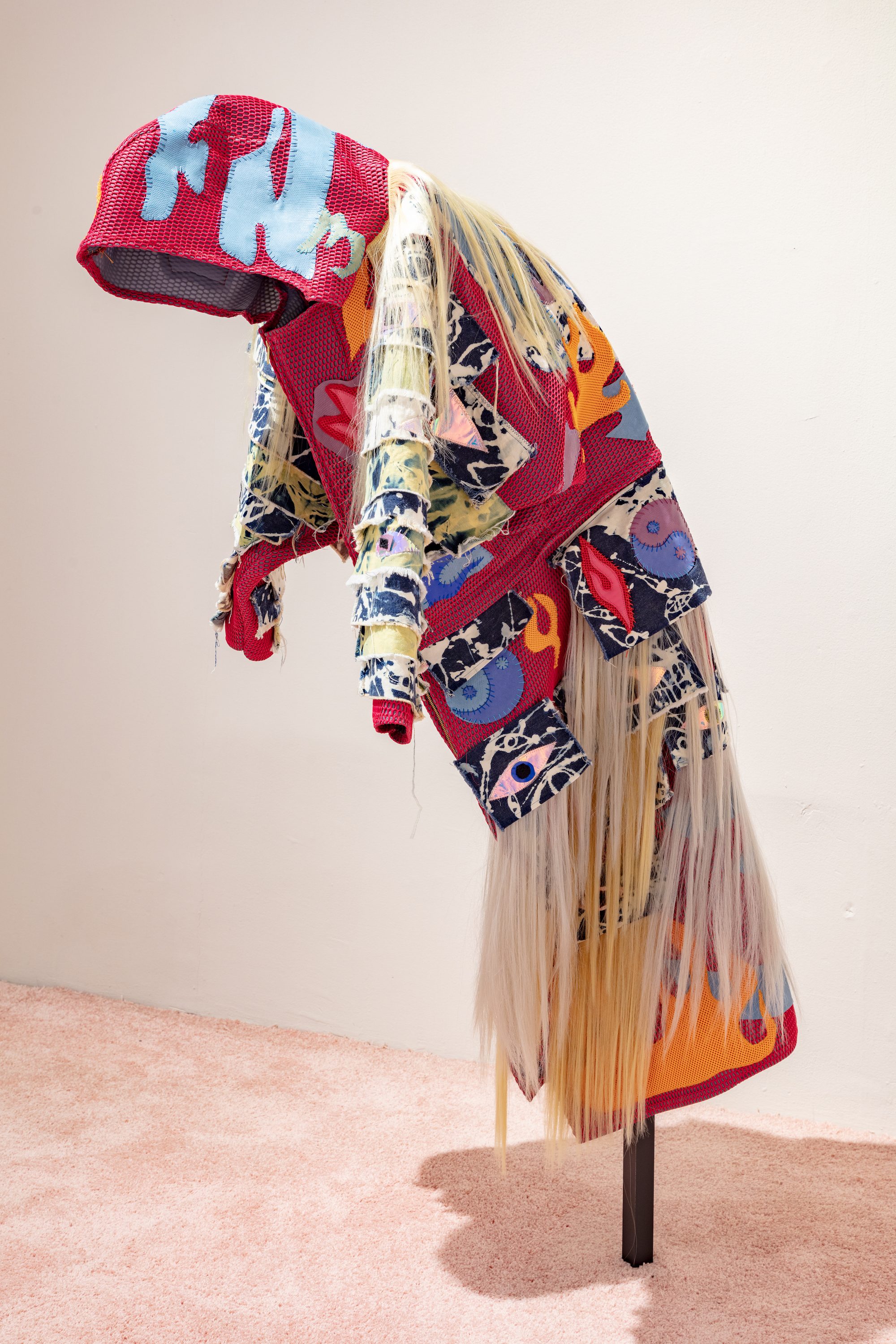





Zadie Xa’s (b.1983, Vancouver) layered textile works - what she calls her “magical garments” - are sites for exploring contemporary identity construction and performance through cultural sampling, informed by Xa’s own experience within the Asian diaspora. Her intricate, hand sewn wearable and performable garments stitch together familiar symbols used to identify Asian bodies as ‘other’ (the commodified yin-yang symbol, sword blades, lucky numbers, and ‘monolid’ eyes). Combating these with diverse references from a range of personally relevant imagery sourced from music, digital space, fashion, and art history. Xa has developed a system of personalized semiotics that propose entirely new images and objects. The series of jackets on display in this gallery serve as an interconnected installation that navigates the space between costume, painting, and performance. Through their form, and also through carefully placed insignia, the garments conjure a suggested body, the artist’s alter ego “Yung Yoomi”, a name which references the pop cultural slang pronoun common among rappers and meme-stars alike, but also the artist’s Korean family names (“Yoomi is her own Korean name, and “Yung” (Young) her aunt’s). Xa’s garments combine contemporary streetwear, Western-style varsity athletic jackets, and traditional Korean ceremonial robes. Her invented “G” logo refers to the “Ganggangsullae,” an ancient Korean women’s folk dance that once was deployed in the 16th century by women dressed as male soldiers as an intimidation tactic that successfully caused invading troops to overestimate the Korean army; but it could just as easily refer to an athletic team or a luxury brand. Her work’s deployment of these exaggerated motifs both challenge perceptions of Asian identities and create new alternatives. Most at home in the supernatural realms, Xa positions the fantastical as an antidote to cultural stereotyping, and her works and their unique language seek to address the many forms of personal and social ritual that feature in contemporary life, but still have deep roots into the past.
-Jocelyn Miller